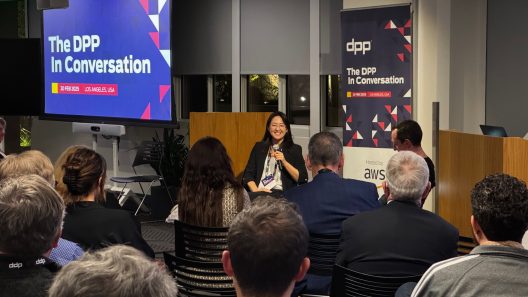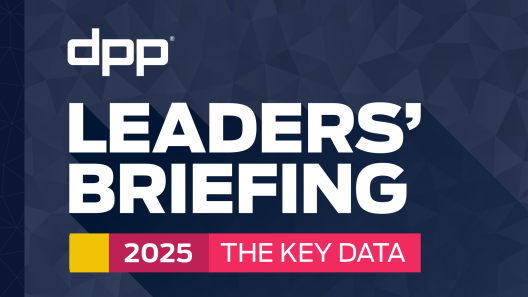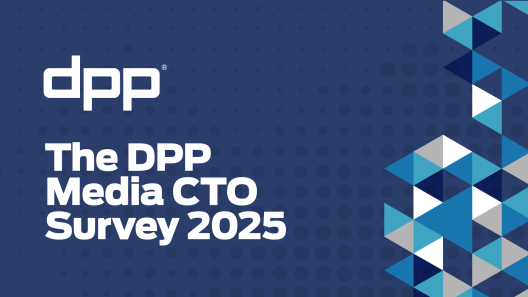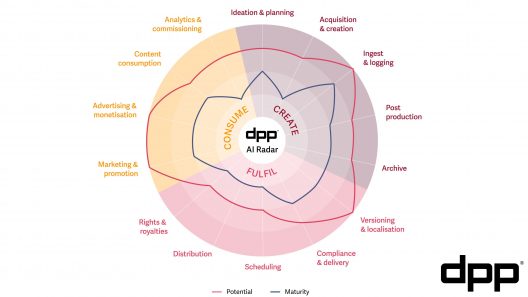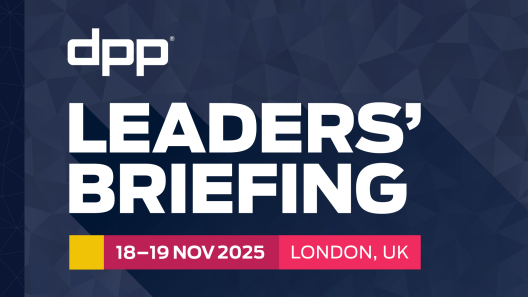Specifications & Guidance
This page outlines all the Technical Specifications, Recommendations, and Guidance documents from the DPP
The DPP supports the delivery of a simpler, more efficient global content supply chain, by enabling members to collaborate on technical projects, and by partnering with standards organisations where appropriate. This page summarises the technical specifications, recommendations, and guidance we have published. It is organised into a number of tabs:
- AS-11 file-based delivery of air-ready programme files
- IMF versioning and mastering using component-based approaches
- Live content exchange over IP networks and in the cloud
- Video on Demand supplier onboarding and metadata exchange
- Metadata packaging and exchange for programmes and news
- Delivery Requirements for content supply to broadcasters and platforms
Document formats
Most DPP technical documents are published using one of the following formats:
- DPP Recommendation - a formal technical recommendation from the DPP, or a normative definition of specific technical parameters. Implementers of a DPP Recommendation are expected to implement it in full.
- DPP Guidance - Supporting information, guidelines, or suggested implementation parameters. They are usually suggestions rather than requirements, and may be implemented in full or in part.
Air-Ready Master Files
The media industry in the UK was transformed on 1st October 2014, when every UK broadcaster made the switch to the AS-11 UK DPP file format for programme delivery. Through the DPP's insight publications, you can read about the story or find guidance for producers on file based delivery.
The DPP worked in collaboration with the AMWA, and the AMWA AS-11 specifications now provide a range of common formats for delivery of air-ready programme master files.
AS-11 UK DPP
Developed in conjunction with UK broadcasters, the AS-11 UK DPP file delivery specification provides a format for completed programme deliveries ('air-ready masters'). It is based on the MXF OP1A format with AVC Intra Class 100 compression for HD, and IMX at 50 Mb/s for SD. It includes a minimum set of requirements for Programme Editorial and Technical Metadata, based on EBU Core. Most UK broadcasters' programme delivery requirements are based on AMWA AS-11 UK DPP.
AS-11 X family
The AMWA AS-11 family of specifications has subsequently been expanded to cover a range of complimentary use-cases.
- AS-11 X1 is designed for broadcasters commissioning UHD content. It offers a high quality yet easily playable file, suitable for broadcast and OTT workflows. It uses Long GOP AVC essence wrapped in MXF OP1A, with BT.2100 HDR, supporting HLG and PQ (HDR10), at 25/50 fps and 4:2:2 colour sampling.
- AS-11 X9, developed in collaboration with NABA, provides a specification for the delivery of air-ready masters in HD, based on the requirements of North American broadcasters. A member of the AMWA AS-11 X family of specifications, the AS-11 X9 specification is based on the MXF OP1A format, with AVC High Profile GOP encoding.
- AS-11 X6 offers an HD format for Commercials and Promos, harmonising the short-form specification with the rest of the AS-11 X family. It supports embedded metadata and adds a new location within the file header for the carriage of subtitle data. There are also sample files available.
- AS-11 X5 is a UHD equivalent of X5, which is currently in draft status.
Carrying AS-11 DPP metadata in other formats
While AS-11 provides a useful format for delivery of air-ready master files, you may use different formats for versioning, international distribution, or VOD distribution. To that end, the DPP provides mappings that define agreed ways to carry AS-11 UK DPP HD metadata in other formats.
- AS-11 metadata in IMF: If you’re receiving or creating IMF packages, and want to later transform them into AS-11 files, you may need to store AS-11 metadata in your IMF. Recommendation DPP003 specifies where to store that metadata such that it can be recovered for the creation of a compliant air-ready master. This document is available on the IMF tab of this page.
- AS-11 metadata in MDDF: Recommendation DPP008 endorses the use of the MovieLabs Digital Distribution Framework (MDDF) for business to business metadata exchange. It is a more expansive metadata set, particularly useful for delivery across multiple platforms including streaming and international. The DPP has authored a mapping between AS-11 UK DPP HD metadata and the MovieLabs Digital Distribution Framework schemas. This enables content providers to deliver a single metadata asset, encompassing the extended information required by the contemporary platforms, whilst providing the facility to carry the metadata required to render an air-ready master to the AS-11 specification. This document is available on the Metadata tab of this page.
Metadata application
In the early days of AS-11 UK DPP, we stimulated adoption of the specification by providing a desktop application for adding DPP metadata to files. The application was an interim measure, and was discontinued years ago. It is no longer supported or updated. If you need to add or edit metadata in an AS-11 file, there are a range of commercially available tools to do this. The DPP is unable to provide software for this purpose.
The Interoperable Master Format
As content is produced for more countries and delivered to more devices, there are more versions of each piece of content. It’s therefore become important to develop more efficient workflows for creating, storing and exchanging versions. The appetite for high quality, localised content brings an enormous opportunity for media companies, yet it also brings great cost and complexity.
IMF is a form of component based media, allowing content producers and distributors to manage multiple versions of their content highly efficiently while retaining the quality of the master asset. For example, in an IMF workflow, you store and manage only the elements of video and audio that are unique between versions, reusing that which is shared rather than duplicating content. It supports unique identification of every media item and composition, meaning that the genealogy of content is clear, simplifying content tracking, rights management, and QC.
SMPTE RDD 59
The IMF standard (ST 2067) were originally developed by the Society of Motion Picture and Television Engineers (SMPTE) to streamline the distribution of premium feature film content. While the foundations of IMF can be applied to most content, there are some ways in which the standards were not well aligned to the needs of broadcasters and online content producers. That’s why the DPP and SMPTE have published IMF Application DPP, also known as RDD 59.
RDD 59-1 IMF Application DPP (ProRes) supports the specific needs of broadcasters and online content distributors. It constrains elements of the SMPTE IMF standards, and includes features such as ProRes, HLG and audio description control track.
Implementing IMF for Broadcast & Online
As with any DPP technical work, the publication of a specification is only part of the puzzle. We've also created guidelines, best practice documents, and delivery templates that you can use as well. If you're learning about IMF, you might want to read about the Business Benefits of IMF, and the IMF Pioneers. Below we have provided more detailed operational and technical guidance:
- Guidance DPP005: IMF Operational Guidance helps adopters to make sense of IMF standards, specifications and terminology, and understand their impact on workflows.
- Recommendation DPP003: Carriage of AMWA AS‑11 Metadata in IMF provides details of a common set of user metadata elements, and defines how they can be carried in RDD 59 IMF Packages. In particular, it addresses the use-case of carrying metadata intended for downstream packaging into an AMWA AS-11 file.
- Guidance DPP004: IMF QC Workflows provides an overview of how quality control processes can be adapted to suit component based media workflows, using formats such as IMF.
- Recommendation DPP006: Plug-in for an Auxiliary Image Sequence defines an IMF plugin for an Auxiliary Image Sequence, allowing overlays to be treated as components in an IMF workflow. This enables use-cases such as sign language interpretation, localisation, branding or advertising. A whitepaper also provides details of the use-cases and implementation.
- DPP IMF Delivery Requirements Template provides a template delivery requirements document that content organisations can use to specify their technical requirements for delivery of programmes in IMF.
IMF for Advertising
We have also explored the use of IMF in advertising workflows, where versioning helps with localised, targeted, and personalised advertising. A DPP working group published a report on the Business Benefits of IMF for Advertising, and developed a number of proof of concept implementations which were demonstrated in an online event which is available to watch.
- PoC 1 addressed the challenge of submitting multi-variant adverts to a clearance process. The clearing house could process all possible versions from a single submission, creating flattened transmission files which were delivered to broadcasters. This process also proved the end-to-end use of CPL metadata, according to DPP003, which was mapped into the flat files as part of the conformance process.
- PoC 2 used the DPP006 plug-in for Auxiliary Image Tracks in IMF to create versions by seamlessly overlaying advertisement items to the original version (OV).
Live Production Exchange
As live production goes increasingly cloud native, IP video transport has become the prevailing transmission method from the field to the studio. While technology for IP live production has proliferated, automation of workflows for scheduling and receiving live feeds has not evolved at the same pace and still requires significant manual effort.
DPP Live Production Exchange (LPX) is a common framework to bridge the gap between live producers, operators and the broadcast technology they use. Its aim is to assist producers and broadcasters to better realise efficiencies from their investments in cloud and IP production technologies by introducing a standardised approach to live production metadata and automation via open APIs for publishing and subscribing to live events.
Live IP Feeds
When contributing or distributing live content via IP, a huge array of different media coding options exist, along with many stream transport technologies. This variety of options makes the process of sharing content complex and costly. Recommendation DPP001 Live IP Profiles for contribution and distribution of live content aims to maximise interoperability between parties and simplify their operations, by limiting the number of different profiles in use.
The DPP project group included broadcasters, systems vendors, and streaming technology providers. They defined a range of use-cases based on their business needs, covering audio, SD and HD video, plus some 4K cases. They then developed recommended media coding and streaming profiles, covering transport stream technology across various network types. The scenarios considered included contribution of live video to broadcast centres, and distribution of live video to DTT, DSAT, and OTT delivery platforms.
VOD Delivery
In 2020, the DPP published an in-depth analysis of the workflows and formats involved in delivering content to VOD platforms. With a lack of commonality between organisations, it unearthed a picture of chaos, complexity, and inefficiency. However, a clear path to a more efficient future also emerged.
Onboarding
When a content distributor delivers content to a platform, the two organisations must first complete a process of onboarding to set up and test the workflows and technology.
Onboarding is a multi-step process requiring the distributor to build multiple profiles, create & validate test files, and configure automated systems. These steps are not always clearly defined, leading to mis-communication and delays. Based on the input of major VOD platforms, content producers, and distributors, we published Guidance DPP007: Best Practices for Content Supplier Onboarding.
Metadata exchange
Another key pain point identified in the report was poor adoption of common metadata formats. We published Recommendation DPP008: Business to Business Metadata Exchange to address this. It is available on the metadata tab of this page.
Business to Business Metadata Exchange
A multitude of complex and custom metadata formats are currently in use for delivering content for streaming platforms, syndication, and international distribution. This was identified as a key pain point in Supplying the VOD Revolution. Having explored the common options available, we published Recommendation DPP008: Business to Business Metadata Exchange. It proposes a common solution around which the industry can unify, based on the MovieLabs Digital Distribution Framework.
Metadata Exchange for News
In a world of fast paced breaking news, efficient use of metadata is critical. Having the right metadata from the outset can help manage news production processes more effectively and get breaking news stories on air as quickly as possible. Yet the urgency of getting rushes back from the field to the newsroom means that, often, only basic metadata is captured (such as a date or location). This can add extra time to the production process as newsroom staff must add additional metadata retrospectively.
DPP Metadata Exchange for News is a common metadata set for news assets, developed in partnership with news organisations and suppliers from the DPP membership. It enables easier search and discovery, clarity around rights information, and smoother collaboration.
As well as the specification and some guidance information, sample files have also been developed to assist with implementation. The files match the 3 stages of the process:
- Planning provides examples of metadata that is generated when planning a story, then transferred to acquisition or capture tools such as cameras and smartphones.
- Acquire and finish offers examples of metadata that is captured during recording and post production, augmenting the planning metadata.
- Delivery samples show how metadata might look when content is ready to be published.
File-based programme delivery to UK Broadcasters
Since 1st October 2014, UK broadcasters have accepted files using the AS-11 DPP file format. Many broadcasters' delivery requirements are based on common DPP reference documents, which are available below.
- DPP010 - Guidance for Production and Post Production of High-Definition (HD) Programmes defines best practices to help ensure that programmes are accepted by broadcasters
- DPP011 - Technical Requirements for the delivery of programmes using the AMWA AS-11 UK DPP HD file format defines technical parameters for High Definition (HD) programme file delivery using AS-11
Note to producers and programme suppliers: you should always refer to the commissioning broadcaster for their delivery requirements - these are not set by the DPP. The following documents only apply to your delivery if specified by your commissioning broadcaster.
Commercials, promotions, and presentation events
Just as with programme delivery, it’s important to have common specifications for delivery of short-form content, such as Commercials, Sponsorship and Promotional material. Just as for programme delivery, the DPP has published reference documents which some broadcasters use to specify their delivery requirements.
Learn more
To find out more about the DPP's technical work, please contact David






